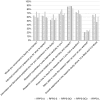Impact of survey length and compensation on validity, reliability, and sample characteristics for Ultrashort-, Short-, and Long-Research Participant Perception Surveys
- PMID: 30393572
- PMCID: PMC6208327
- DOI: 10.1017/cts.2018.18
Impact of survey length and compensation on validity, reliability, and sample characteristics for Ultrashort-, Short-, and Long-Research Participant Perception Surveys
Abstract
Introduction: The validated Research Participant Perception Survey (RPPS-Long) elicits valuable data at modest response rates.
Methods: To address this limitation, we developed shorter RPPS-Ultrashort and RPPS-Short versions, fielded them with the RPPS-Long to a random sample of a national research volunteer registry, and assessed response and completion rates, test/retest reliability, and demographics.
Results: 2228 eligible registry members received survey links. Response rates were 64% (RPPS-Ultrashort), 63% (RPPS-Short), and 51% (RPPS-Long), respectively (P<0.001). Completion rates were 63%, 54%, and 37%, respectively (p<0.001). All surveys were reliable with Cronbach's alpha = 0.81, 0.84, and 0.87, respectively. Retest reliability was highest for RPPS-Short (Kappa=0.85). Provision of compensation increased RPPS-Short completion rate from 54% to 71% (p<0.001). Compensated respondents were younger (p<0.001), with greater minority representation (p=0.03).
Conclusions: Shorter surveys were reliable and produced higher response and completion rates then long surveys. Compensation further increased completion rates and shifted sample age and race profiles.
Conflict of interest statement
Conflict of Interest/Disclosure The authors have no conflicts of interest to disclose.
Figures

References
-
- Hospital Consumer Assessment of Healthcare Providers and Systems. HCAHPS quality assurance guidelines (V12.0), 2012.
Grants and funding
LinkOut - more resources
Full Text Sources
